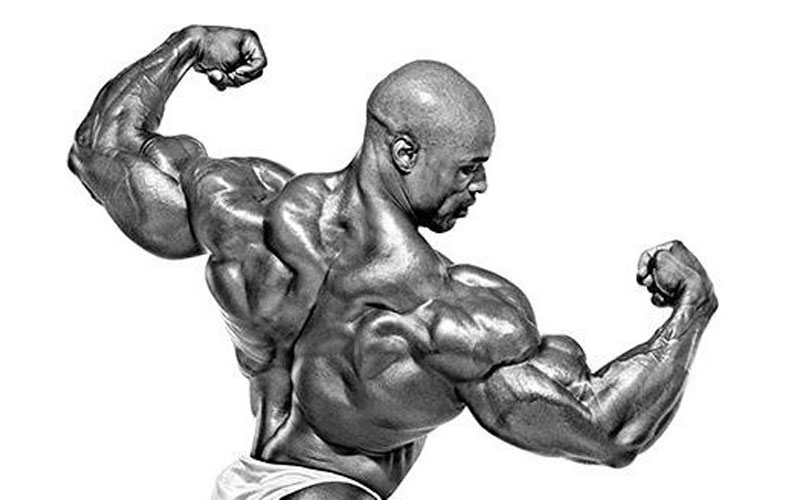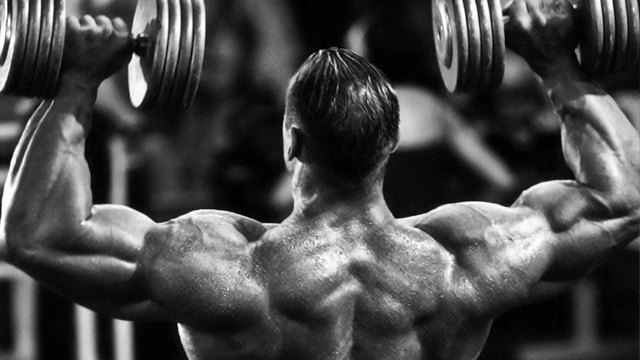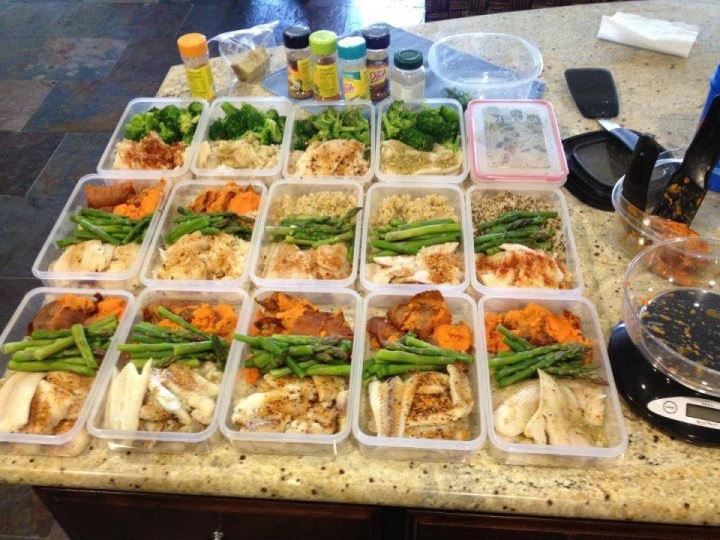
It’s a topic that’s been on the agenda of every lifter new to the gym for decades now ‘how to build muscle mass.’
A handful might go to the gym for the health benefits that it offers, but then there are those who go to the gym to gain more muscle mass.
Weight training can be a double-edged sword if you don’t know what it is that you’re doing. You could either be in the gym, working out with the goal of building mass but end up losing weight.
Or you could be lifting weights with the goal of getting shredded but end up adding mass. It’s all a question of applying the correct training in correspondence with your physique goals.
Knowing How To Build Muscle Correctly
If you don’t know what it is that you’re doing and you think that simply by lifting weights for an X-amount of sets and reps, you’ll get jacked, you’ve got another thing coming.
Sure, bodybuilders have been able to get bigger and stronger simply by lifting weights when they started working out. However, these men knew how to train instinctively — something that not all of us know how to do.
If you’re reading this article, you’re probably one of those who doesn’t know how to train instinctively, or you’re simply curious as to what it takes to add more mass to your current frame and physique. We’ve said this before but it can’t be stressed enough.
Three Components To Muscle Mass
The three key components on how to build muscle mass come down to training, nutrition, and rest — that’s it.
Yes, there may be supplements and a few under-the-counter stuff that you can use to speed up the process. But without those three vital components present, you’re mass growing plan will be useless.
We’ll only cover two of those components in detail on how to build muscle mass so that you can be on your way to having complete success at making gains.
The Basic Guide on How to Build Muscle Mass
Training
A simple, yet complex aspect of building mass. As mentioned above, lifters who are new to the gym think that they should simply lift weight and that will cause them to grow.
This is both correct and incorrect. Yes, lifting weights will help you add on the sought after muscle mass that you so desire, but at the same time, lifting weights can also turn into an aerobic experience.
If the muscles aren’t being stimulated enough, you will experience a minimal amount of muscle growth. For building muscle mass, stimulation is an important factor for adding on size. By not stimulating the muscle, you turn free weight training into cardio.

Weight, Reps, and Hypertrophy
There are a few ways to stimulate the muscle into growing. Two of the most common ways are to make small weight increments each week and training to failure.
Then there are other things that should be mindful of when training for mass; rep range and the number of sets performed per muscle group.
When training for pure strength, a rep range of 1-3 repetitions are recommended. But when training for hypertrophy and strength, a rep range of 5-12 does the job – even as many as 20 reps are recommended for hypertrophy training.
However, when going as high as 20 repetitions, you should be damn-near screaming towards the end of the exercise.
Different Types Of Hypertrophy
Even though the term “hypertrophy” is used, it’s important to note that there are two types of hypertrophy.
Myofibrillar Hypertrophy is when more actin and myosin (contractile proteins) are added to the already-existing proteins in the cell.
When more contractile elements are within the cell, the more force that cell will be able to produce. This kind of hypertrophy adds little mass but greater increases of generated force.
And then there is Sarcoplasmic Hypertrophy. With this form of hypertrophy, there is a greater accumulation of cytoplasmic and metabolic substrate than there is in myofibrillar hypertrophy. Low-intensity and high-volume training incur this upon the cells.

Ideal Balance Of Training
Your goal should be to train for sarcoplasmic hypertrophy as opposed to myofibrillar hypertrophy.
How do you do this? By performing a moderate amount of sets combined with a high number of reps. As mentioned earlier, performing up to 20 reps is recommended for hypertrophy, more specifically, sarcoplasmic hypertrophy.
However, not all muscle groups should or have to be trained with 20 reps. Some muscles are used more during our everyday lives, for example, calves, abs, arms, and shoulders should be trained with a higher rep range than that of the chest, back, and legs.
This is not to say that the latter should be performed within a low rep range, the former should just be trained with more.
Ideal Working Sets
Here’s an example of what the set and reps scheme would be for each muscle group:
- Calves & Abs — 4-5 sets of 18-25 reps
- Arms & shoulders — 4-5 sets of 15-20 reps
- Chest & Back — 4-6 sets of 8-15 reps
- Legs — 4-6 sets of 12-15 reps
These numbers aren’t set in stone and may vary from one person to the next, but it should still provide a good starting point.
Remember to use a weight that would challenge you — muscle stimulation is key.
Nutrition
Back in the golden days of bodybuilding, bodybuilders would never, or rarely, count their calories, something which is a far cry of what today’s competitors do. Back then, bodybuilders would fill up their plates with protein first and then add a baked potato and a salad to the mix.
You might think that it’s an unorthodox form of eating, especially where bodybuilding is concerned. See, in those days bodybuilders didn’t have access to the information that we do today.
All they knew was that protein builds muscle, carbs give you energy, and salads provide the fiber — a very basic understanding, yet it makes sense no matter how you look at it.

Protein For Mass
The most vital macronutrient for building muscle is protein. Why is that? Protein consists of amino acids, the building blocks of protein.
So why do you need to consume protein to grow your own muscle mass? Because when you train, you’re breaking down muscle tissue, and to repair the broken down tissues, amino acids are required to aid in the repairing process.
Without consuming enough protein, your growth process will be a slow and frustrating one.
If you’re not sure about how much protein you need to consume, a basic and effective way of calculating it is by multiplying your body weight (in pounds) with 1.1. The number that you get should then equal the amount of protein that you should be consuming in grams.
If you weigh 170 pounds, you multiply that by 1.1, giving you 187 grams of protein that you need to consume.
Carbohydrates
As for carbs, you should play around with as no two people are the same. People’s glycogen stores vary from one to the next, meaning that one person can eat 400 grams of carbs and still look the same. While another person eats 150 grams and adds weight relatively quickly.
A good starting point for carbs would be to multiply your body weight by 1. Remember that your goal is to add muscle mass, not fat mass.
Monitor your weight every second day, first thing in the morning. If your weight goes up by one pound or slightly less each week, then you know that you’re on the right track.
If your gain more than one pound a week, then you should decrease your carb intake by 10 grams until the weight gain slows down.
Fats
With regards to fat, a ‘safe zone’ would be between 30-60 grams a day. However, try to keep your fat intake as consistent as possible. Fat is a hormone regulator, so consuming enough of it is vital in testosterone production.

Rest
This one doesn’t take much brain power. You don’t need me to tell you on how to sleep. I will say this though, getting at least 8 hours of sleep in is absolutely vital in allowing your muscles to fully recover and grow.
Without rest, you won’t see all the results of your hard labor in the gym and in the kitchen.
Conclusion
The answer on “how to build muscle mass” is a simple one, but it requires effort on your end to make it work.
When it comes to training, remember to keep your reps high with a weight that challenges you. The goal is to stimulate the muscles, not annihilate.
To recover from your grueling workout sessions, you will need to consume and adequate amount of protein. Play around with your carb intake, but keep an eye out on your body weight. If you gain more than one pound a week, dial the carbs back a bit.
Last but not least, rest. Be sure to get at least 8 hours of sleep in every day. Without the right amount of sleep, your time spent training and keeping to your diet will be for naught.







Loved the scientific explanation very reliable. Thumbs up!